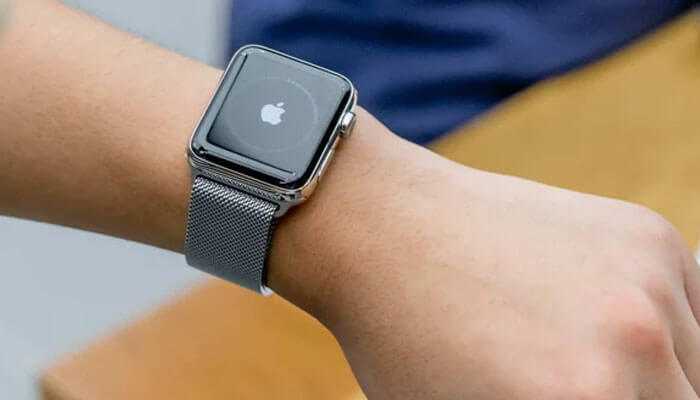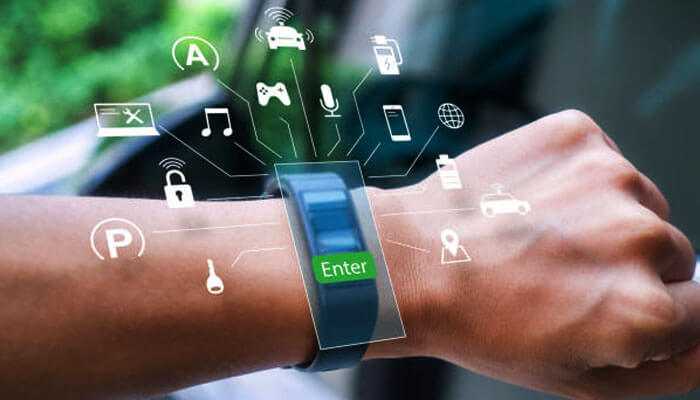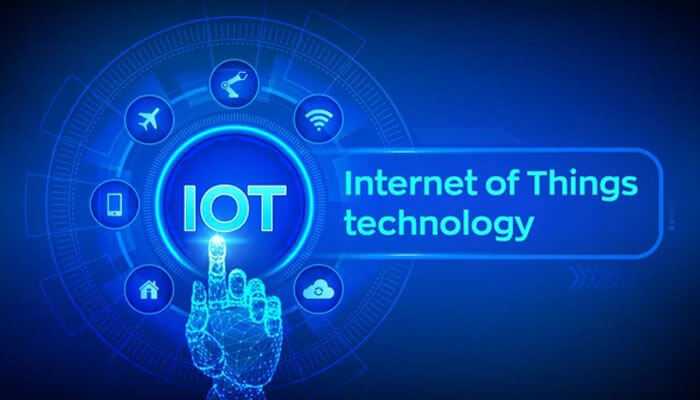Wearable IoT Devices Innovate Personal Finance in 2024
Statista claims that the global market for wearable IoT devices will reach 1.1 billion in 2022. This season, the technology can be used not only in healthcare but also in the future in various industries, including the financial sector. They also play an important role in financial cooperation.
Wearable devices are an essential part of your life, even integrated into the process of tracking information about your health. Smartwatches and fitness trackers, popular for health monitoring, can also be used in financial operations.
The Internet of Things (IoT) has revolutionized everyday routines and industries. But there is no need to explain. In a short time, you can eliminate the potential of this technology.
This is some information about IoT in finance, e.g. IoT technology and mobile payments. The wearable IoT device will change the financial sector in 2024.
How Do Mobile Payments & Wearables Work?
Let’s start with defining mobile payment.
It is a payment operation carried out using a smartphone, tablet, or smartwatch. Typically, these payments are prevalent since people find them convenient and simple. There are a bunch of technologies (mobile wallets, NFC, or QR codes,) to proceed with mobile payment.
How do wearable devices work?
To purchase a payment device that customers can wear, they must link it to a credit card or bank account. Once connected to the device, clients can make payments by simply bringing the device to the payment terminal. Then, the payment is processed through an additional credit card or bank account associated with the device.
Electronic banking and payment platforms use wearable payment systems. These systems work with different technologies, e.g. HCE, barcodes, contactless point of sale, radio frequency identification (RFID), and near field communication (NFC) that enable payments and transfers.
IoT technologies bring several innovations to the financial sector. For instance, they allow customers to make a transaction fast, comfortably, and securely. Devices, connected to the Internet, also allow authenticating transactions and providing location-based services.
To pay using the smartphone, the user has to pass biometric authentication, e.g. fingerprints or facial recognition. Smartwatches are connected to phones, providing an additional level of security. As a result, we can experience reduced risk of fraud.
Additionally, Internet sensors show the location of a mobile or wearable IoT device and verify transactions. Apple Wallet even sends the name of the store where the payments were made.
There are several examples of mobile payment systems that use IoT:
1. Apple Pay is a payment system that uses NFC. This technology allows making transactions with an iPhone or Apple Watch. To protect payment information, the system utilizes biometric authentication and tokenization technology.
2. Samsung Pay. One more payment technology that uses NFC technology in addition to Magnetic Secure Transmission. MST enables customers to proceed with payments with traditional card terminals that don’t support NFC. This technology generates a magnetic signal that imitates card reading.
3. Google Pay is an alternative technology for Android devices that also uses NFC for contactless transactions. Google Pay allows clients to transfer money in a few clicks using mobile devices.
Wearables are trendy due to their convenience. People tend to make payment transactions using different wearable IoT devices such as smartwatches or fitness trackers.
1. Smartwatches

2. Samsung Galaxy Watch has a bright screen and NFC technology for convenient payments.
2. Fitness trackers
- The Xiaomi Mi Band also tracks fitness activities and lets customers pay on the go.
- The Huawei Band Pro takes care of people’s health and, thanks to NFC technology, allows secure mobile payments to be made.
- Fitbit Charge allows for tracking health and conveniently paying with a click using Fitbit Pay.
3. Smart Rings
- A Token Ring is an elegant ring that provides a secure way of making transactions.
- McLEAR Smart Ring allows customers to pay with a simple movement.
- Oura Ring is primarily a health tracker, but it also enables payments, giving a complete package of health and money services.
Advantages of wearable IoT devices
1. Ease of use:
Wearables are more comfortable to use on the go than other payment methods. These days, customers don’t need to look for cash, a credit card, or a smartphone to make a payment, just bring their smartwatch to the reader.
2. Improved security:
Mobile devices are protected by biometric authentication, such as fingerprint or face recognition. Wearables are constantly connected to mobile phones, providing an additional protection level.
3. Increased transaction speed:
Payments are made quicker because users don’t have to search for cards or smartphones. This saves time for both the buyer and the seller.
4. Boosted user experience:
Wearables provide the best user experience, as mobile payments are fast, simple, and safe.
Potential Advances in IoT-Enabled Payment Systems
The most important benefit is the use of biometrics for authentication. IoT devices are equipped with different biometric sensors, so customers can authenticate transactions using fingerprints or facial recognition without having to enter passwords and PINs. This protection method is considered one of the most secure and fast.
Considering wearables, they can detect once the user takes the device off. It’s necessary to enter the password or bring it close to the unlocked smartphone to use a smartwatch again.
In addition to IoT, let’s mention two more technologies — artificial intelligence (AI) and machine learning (ML).
Analyzing customer behavior, artificial intelligence, and machine learning algorithms can identify patterns and anomalies in payment transactions. Of course, it leads to preventing malicious attacks.
Collecting large amounts of data from wearable IoT devices provides high-quality analysis of massive data and allows the implementation of artificial intelligence solutions based on machine learning methods. In addition, wearables create additional touchpoints between the financial institution and the customer, the value of which is independent of the consumer’s location. Detailed personal information and real-time behavioral data enable targeted, personalized services to be delivered promptly.
With the advent of contactless payments and mobile wallets, we can already experience the impact of the Internet. Many companies are implementing payment systems with the help of the Internet of Things so that we can expect the emergence of new players in the market and the adaptation of traditional players to new tech solutions.
A lot of new technologies have been developed to support wearable IoT devices and the financial sector. They ensure stable connections between devices. For example, Node-Red MQTT is an open-source tool designed for creating and managing applications related to IoT. It provides a comprehensive set of built-in nodes of tech specialists that solve different tasks, working with IoT protocols such as MQTT and HTTP.
Benefits IoT brings to the financial industry
1. Faster payment processing:
NFC-enabled IoT devices, including smartphone cases, wearables, and rings, allow users to make instant payments with just one touch without using credit or debit cards. It offers convenient and secure contactless payments for hassle-free financial transactions.
There is also a growing trend towards voice-based financial transactions, where customers can make payments simply by controlling the smart speakers (Alexa, Nest, HomePod, etc.).
2. Improved risk management:
Information collected from IoT devices can help financial institutions reduce the risk of bad credit, security, and financial fraud. Combined with robust data analytics, wearable IoT devices can detect subtle anomalies in users’ financial transactions that could indicate financial or insurance fraud. Such systems can also be configured to accurately assess a person or company’s suitability for credit, insurance, or investment.
3. Best customer service:
As we have seen in the healthcare sector, the Internet technology is an excellent source of valuable data. In this case, financial institutions can use IoT data to develop differentiated products and services based on usage.
IoT data analytics provide insight into customer preferences, purchasing behavior, and lifestyle. It’s common to use this knowledge to develop more personalized financial offers. Such information helps identify inefficiencies, barriers, and bottlenecks in the company’s service delivery model. As a result, the financial institution can improve its services.
According to the latest statistics, contactless payments are experiencing fast growth — a compound annual growth rate (CAGR) of 19.1% from 2022 to 2030. Smartphones and wearable IoT devices continue to dominate contactless payments, so growing demand for them will drive the development of ePay technology.
The Bottom Line
Soon, wearable innovation will not be limited to smartphones with which we are already familiar.
Consumers in the US and Europe are willing to use an average of five wearable IoT devices per smartphone, and this is a niche where companies can look for potential customers for their services.
Payments using smart jewelry, cash withdrawals from ATMs, smart authentication, and voice technologies for mobile banking — this is an incomplete list of what should soon become commonplace for ordinary users. Fintech and e-commerce providers need to be prepared for this.
Author‘s bio:
As an accomplished technology enthusiast, Laurenz Dallinger has a strong interest in digital transformation, with a particular focus on IoT. As a valued member of the Cedalo team, the company behind the top MQTT broker, Laurenz is passionate about sharing his knowledge and ideas with developers seeking new and efficient ways of communicating with devices.



